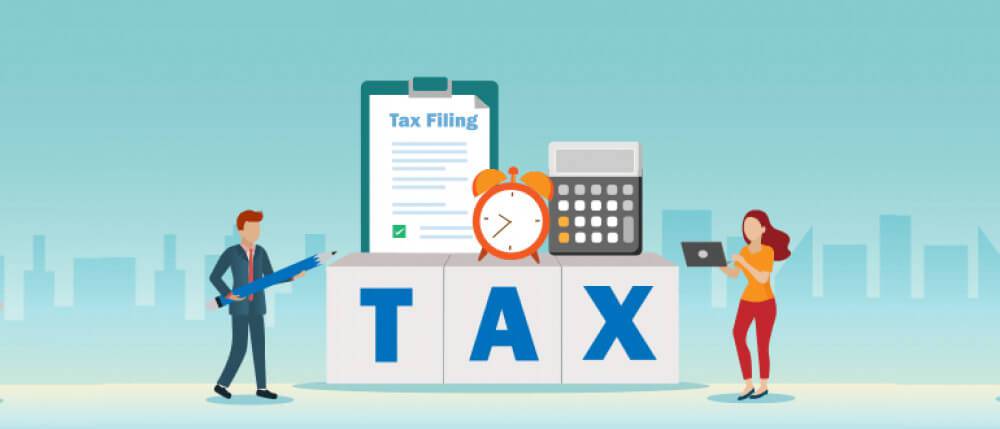Subscribe to get weekly insights
Always stay up to date with our newest articles sent direct to your inbox
Published on 9 Nov, 2022
Updated on 22 Sep, 2023
869 Views
3 min Read

Written by Care Health Insurance
favorite0Like
favoriteBe the First to Like
In an attempt to ease the process of filing the Income Tax Return (ITR), the Central Board of Direct Taxes (CBDT) has proposed to release a common ITR form for a majority of taxpayers. The Body has put forward, the draft to merge all the ITR forms except for ITR-7. The CBDT has also proposed to keep the current ITR-1 and ITR-4 in their drafted proposal.
The demented taxpayers from across the country are searching for ways in which the proposal will make it easy for them to file an ITR. Here are answers to the most frequently asked questions:
The Income Tax Return (ITR) form should be filled out by every working individual whose yearly income is 2,50,000 or more. The ITR form comprises information about an individual's income and taxes that they have paid during the financial year. The information in an ITR form should concern the details of that particular financial year.
Majorly seven types of Income Tax Returns are filed in India by different categories of taxpayers in today's date. The respective ITR forms are as mentioned below:
ITR Form 1, also known as 'Sahaj', is an Income Tax Return Form that can be filled by individuals whose annual income is up to ₹50 lakh. People whose source of earnings is from salary, house rent, property or interests are typically eligible to fill out the form.
People with a permanent income from a residential property should file the ITR Form 2.
People whose income is based on profits from businesses are eligible to fill out the ITR Form 3.
ITR Form 4, also known as 'Sugam', is similar to the ITR Form 1 'Sahaj' and can be filed by individuals with an annual income of ₹50,00,000 from business and profits.
ITR Form 5 is for Limited Liability Partnerships (LLPs), whereas people who own businesses can file ITR Form 6.
All non-profit organisations and trusts can fill out the ITR Form 7.
The proposal by the CBDT says that all taxpayers, excluding the trusts and non-profit organisations, will now be able to fill out a common ITR form. The common ITR form will also comprise a separate header to declare income through digital assets.
In simple words, a common ITR shall be proposed after merging all the essential features of existing ITR forms. The ITR Form 7 has been excluded from the pact.
Although the draft proposes to merge all the pre-existing ITR forms into one, ITR form 1 (Sahaj) and ITR form 4 (Sugam) will be continued. Individuals who used to fill out ITR Form 1 or ITR Form 2 can continue to fill out the pre-existing form or choose to fill out the common ITR form.
According to the Central Board of Direct Taxes (CBDT), the recently proposed draft of tax filing has been created by understanding and inculcating the best international tax filing practices. The draft aims to make the tax filing process easier for all age groups of taxpayers.
After bringing in a common ITR form for all groups of taxpayers (excluding ITR 7), the taxpayers will not have to check out the schedule and can considerably save time. The newly drafted ITR is designed in a user-friendly manner with a better logical flow and an increased scope of pre-filling, said the CBDT.
So, yes, the newly proposed draft of the ITR form will indeed prove beneficial in many ways.
>>Also Read: E-filing of Income Tax Return: Why is it Important?
Once the newly proposed ITR draft gets implemented, taxpayers eligible for ITR 1 and ITR 4 will be eligible to fill either ITR 1, ITR 4, or ITR 7. However, taxpayers eligible for ITR 2, ITR 3, ITR 5 and 6 will have to continue filling up the newly proposed ITR.
Earlier, the frequent changes to seven different forms meant a tedious filing process with extensive learning for taxpayers. Now that a single ITR form has been proposed, the workload for the taxpayers will most probably decrease; however, the taxpayers will have to be more careful while filling out the form.
Did you know? You can also claim tax benefits upon mentioning your health insurance plan in Section 80C and Section 10 of the ITR. Just buy your health insurance policy from Care Health Insurance and mention all the details in your ITR for under Section 80C and according to a provision of the Income Tax Act, you may get eligible for tax deductions. Tax deductions will be made based on the total income of the policyholder.
>> Also Read An Informative Guide About Section 234F of the Income Tax Act
Disclaimer: The above information is for reference purposes only: Policy Assurance and Claims at the underwriter’s discretion.
favoriteBe the First to Like
Thyroid : मामूली नहीं हैं महिलाओं में थायराइड होना, जानें इसके लक्षण और घरेलू उपचार Vipul Tiwary in Diseases
शुगर कंट्रोल कैसे करे? जानें, डायबिटीज में क्या खाना चाहिए Vipul Tiwary in Health & Wellness
हाई ब्लड प्रेशर को तुरंत कंट्रोल कैसे करें? देखें इसके उपाय Vipul Tiwary in Diseases
पैरों में दर्द किस कमी से होता है? जानें, इसके घरेलू इलाज Vipul Tiwary in Health Insurance Articles
Silent Epidemic: Fatty Liver Disease Now Targeting the Young! Jagriti Chakraborty in Health Insurance Articles
Iodine Rich Foods: The Unsung Heroes of a Healthy Thyroid and a Sharp Mind Jagriti Chakraborty in Diet & Nutrition
Honey, Jaggery & Sugar: Which Sweetener Wins? Jagriti Chakraborty in Health & Wellness
What Happens to Your Body When You Eat Capsicum Every Day? Jagriti Chakraborty in Diet & Nutrition
Always stay up to date with our newest articles sent direct to your inbox
Loading...